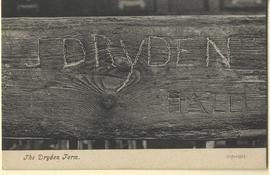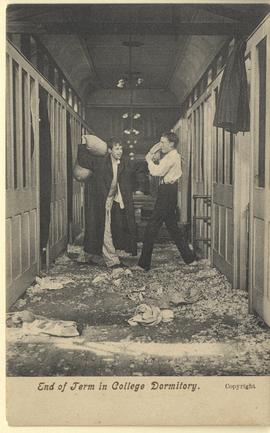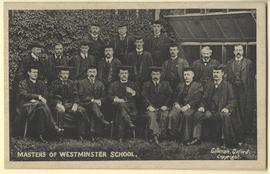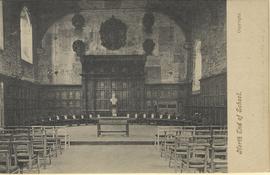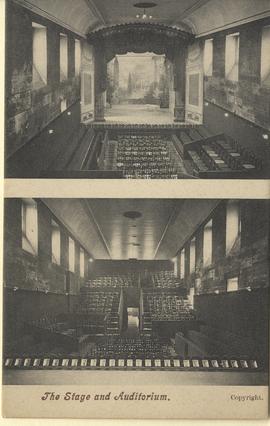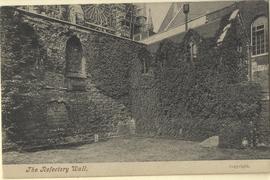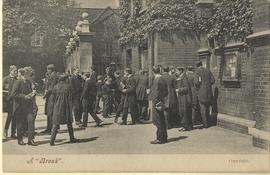- GB 2014 WS-02-POS-01-34
- Item
- c.1911
One copy annotated on reverse by R.S. Chalk, as follows:
'Mid-day hall, 1920-1924 R.S.C
My memories of this picture are concentrated on the entrance stairs, where as Under Elections we would congregate to await the arrival and entrance of the H.M. Second Elections stood on the landing, leaning on the rails and watching T.BB assembling in the court below; Juniors stood on the stairs in exact order of seniority. Three Second Elections (including non-resident KSS) took turns to say Latin Grace (“Oculi amnium” etc- Psalm 145, vv15-16)
In my day there was Early Hall (for members of Under School up A.HH or H.BB) at 12:40 pm. Late Hall (for K.SS and Upper School A.HH & H.BB, with Masters) followed at (I believe) 1:15. How we ever got through a meal, got back to our Houses, changed and got up Fields by 2pm for football till 3pm will ever remain a mystery to me- the more so as I do not recall any great sense of hurry.
(It certainly did one’s digestion little good). If I remember, Early School was introduced later (2-3:30pm), giving time to get down to Water.'



